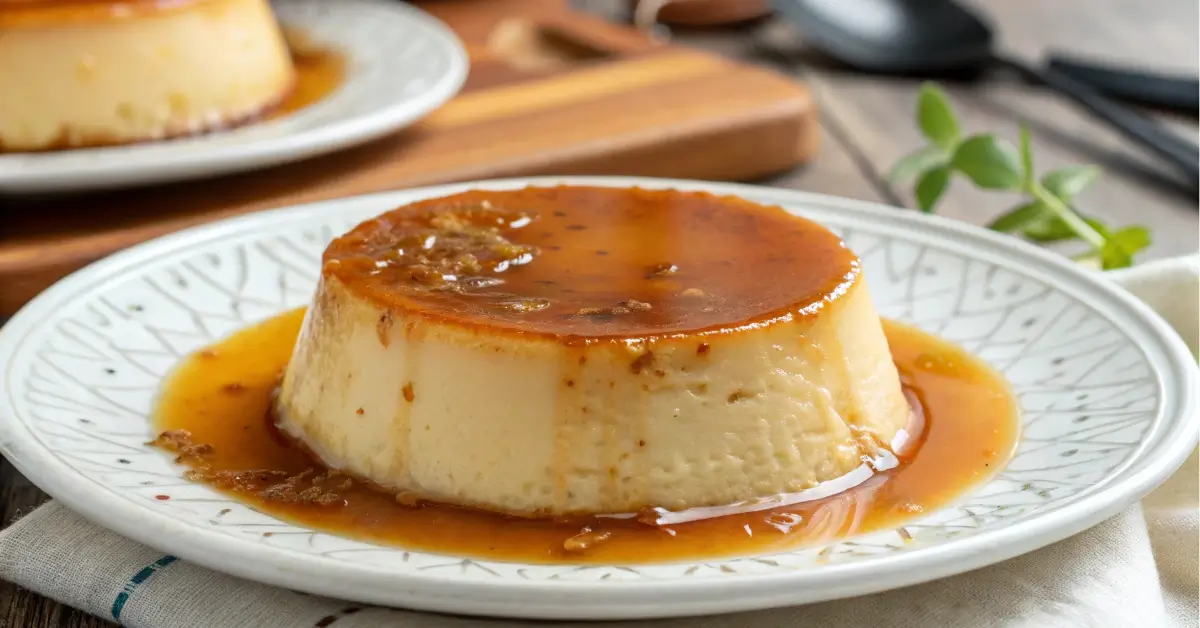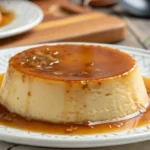When you crave a silky, sweet dessert that practically melts in your mouth, quesillo is the answer. This Latin American treat offers a rich, caramel flavor combined with a creamy texture that’s simply unforgettable. Whether you’re a seasoned baker or just starting out, learning how to master quesillo can add a delicious flair to your dessert lineup. In this article, we’ll dive into everything you need to know about quesillo, from its origins and ingredients to step-by-step recipes and expert tips.
Check out another one of our favorite desserts like Chocolate Crepe Cake if you’re in the mood for more sweet inspiration.
Jump to:
What Is Quesillo?
Understanding the Origins of Quesillo
Quesillo is a beloved dessert across Latin America, especially in Venezuela, Nicaragua, and parts of Mexico. Although its name means “little cheese” in Spanish, traditional quesillo actually doesn’t contain any cheese. The dessert gets its name due to its texture, which resembles a soft cheese. It’s often compared to flan, but quesillo stands out for its rich, dense custard and heavy caramel flavor.
Tracing its roots, quesillo has been a staple in Venezuelan celebrations for generations. It is commonly prepared for birthdays, holidays, and family gatherings. What makes quesillo unique is the use of sweetened condensed milk and a special cooking method involving a water bath, ensuring a moist and creamy finish.
Differences Between Quesillo, Flan, and Cheesecake
At first glance, quesillo and flan might seem identical. However, when you dig deeper, key differences emerge:
| Dessert | Main Ingredients | Texture | Flavor Notes |
|---|---|---|---|
| Quesillo | Sweetened condensed milk, eggs, sugar | Creamy, dense | Very sweet, rich caramel |
| Flan | Whole milk, sugar, eggs | Soft, silky | Light caramel flavor |
| Cheesecake | Cream cheese, sugar, eggs, graham crust | Thick, creamy | Rich and tangy |
Unlike cheesecake, quesillo doesn’t use cream cheese or a crust. While flan uses evaporated milk and tends to be lighter, quesillo is a bit firmer and intensely sweet thanks to the condensed milk.
Looking for inspiration? Try our Paula Deen Banana Pudding for another creamy dessert idea!
Traditional Ingredients Used in Quesillo
Main Ingredients and Their Role
At its core, quesillo is a simple yet luxurious dessert crafted from a handful of essential ingredients. Each one plays a vital role in creating its signature creamy texture and decadent caramel flavor.
Here’s what typically goes into a traditional quesillo:
- Sweetened Condensed Milk: This is the backbone of the dessert, providing richness, sweetness, and a smooth texture.
- Whole Eggs: Eggs give quesillo its firm but silky structure. They act as a natural thickener when baked.
- Granulated Sugar: Used to create the irresistible caramel layer that tops the dessert.
- Whole Milk or Evaporated Milk: This thins the condensed milk slightly, ensuring the custard is creamy without being too dense.
- Vanilla Extract: A splash of vanilla rounds out the flavors, adding warmth and depth.
Each ingredient is carefully balanced. Too many eggs can make the quesillo rubbery, while too little milk can leave it overly dense.
Discover great ideas like our Cake Mix Banana Bread if you’re looking for other sweet treats made with simple ingredients.
Substitutes for Traditional Ingredients
If you’re missing some traditional components or need a twist for dietary needs, here are some handy swaps:
| Traditional Ingredient | Substitute Option | Notes |
|---|---|---|
| Sweetened Condensed Milk | Coconut condensed milk (vegan) | Offers a hint of coconut flavor |
| Whole Eggs | Flax eggs (vegan option) | Will slightly change texture |
| Whole Milk | Almond or oat milk | Great for a lighter dessert |
| Granulated Sugar | Coconut sugar or agave syrup | Alters the caramel taste slightly |
It’s important to note that while substitutes can work, they may slightly adjust the texture and flavor of your quesillo. If aiming for authenticity, stick to the classic ingredients whenever possible.
Check out our Easy Almond Cake Recipe for more delightful baking inspiration if you’re feeling adventurous in the kitchen!
How to Make Quesillo at Home
Step-by-Step Guide to Making Classic Quesillo
Making quesillo at home might sound fancy, but it’s actually a breeze with the right steps and a little patience. The key to success is in the preparation and baking method. Let’s walk through the process.
Ingredients:
- 1 cup granulated sugar (for caramel)
- 1 can (14 oz) sweetened condensed milk
- 1 can (12 oz) evaporated milk
- 4 large eggs
- 1 tablespoon vanilla extract
Instructions:
- Preheat & Prep
Preheat your oven to 350°F. Prepare a water bath by filling a large baking dish halfway with hot water. You’ll place your quesillo mold inside this during baking. - Make the Caramel
In a saucepan over medium heat, melt the sugar until it turns golden brown. Quickly pour it into your mold or flanera and swirl to coat the bottom evenly. - Blend the Custard
In a bowl or blender, combine sweetened condensed milk, evaporated milk, eggs, and vanilla. Mix until smooth, but don’t overbeat—it creates bubbles that affect texture. - Pour & Bake
Pour the custard mixture over the caramel. Cover tightly with foil. Place it inside the water bath and bake for 60–75 minutes or until a knife comes out clean. - Cool & Unmold
Let it cool to room temperature, then refrigerate for at least 4 hours (overnight is best). To serve, run a knife along the edges and flip onto a plate.
Don’t miss our Jello Cake Recipes Easy for another crowd-pleasing dessert that’s just as fun and nostalgic.
Common Mistakes to Avoid
Even though quesillo is straightforward, a few missteps can ruin that silky texture. Avoid these common errors:
- Overmixing the custard: This introduces too much air, causing bubbles and cracks.
- Skipping the water bath: It’s crucial for gentle cooking and smooth texture.
- Unmolding too early: Always chill thoroughly before flipping. Otherwise, it might fall apart.
- Too much heat: High temps will curdle the eggs, resulting in a gritty texture.
Here’s a quick chart to troubleshoot:
| Problem | Cause | Solution |
|---|---|---|
| Bubbles on top | Overmixing | Blend gently or use a whisk |
| Rubber-like texture | Overbaking or too many eggs | Bake until just set |
| Caramel too hard | Overcooked sugar | Remove from heat when golden brown |
| Won’t unmold | Insufficient chilling | Chill overnight for best results |
Don’t miss our Vermont Chewy Molasses Cookies for another sweet challenge worth mastering.
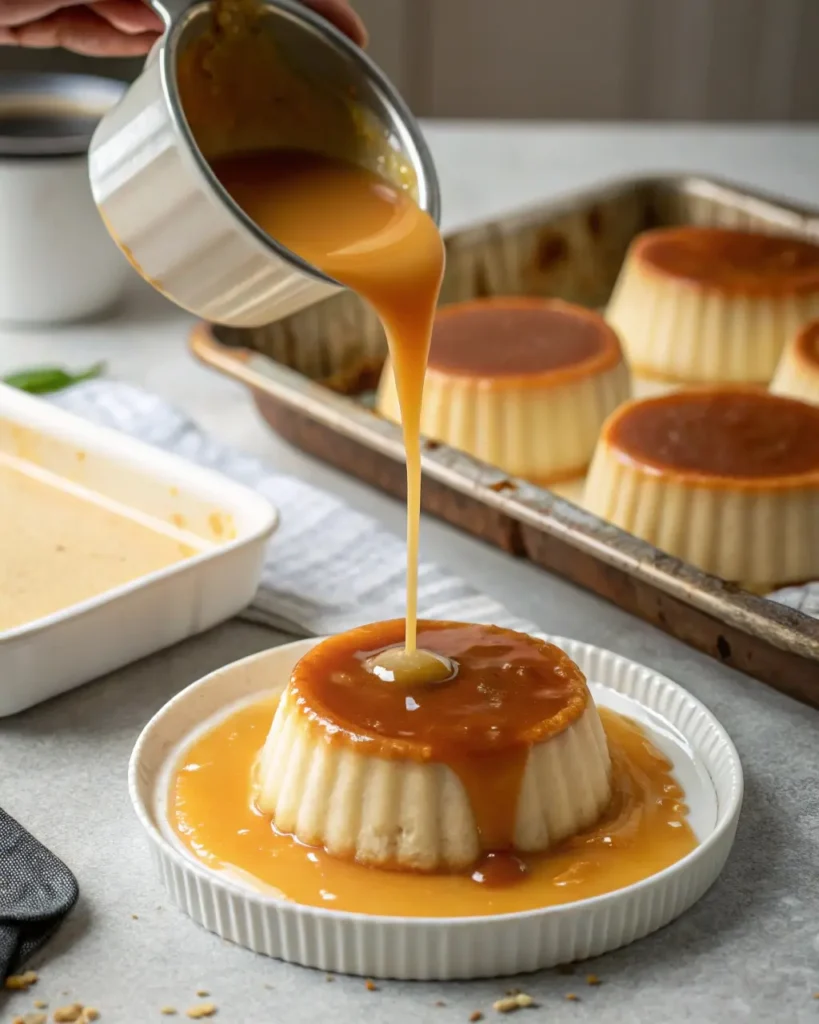
Regional Variations of Quesillo
Quesillo in Venezuela, Nicaragua, and Mexico
Quesillo is loved in many Latin American countries, but each puts its own spin on this custardy classic. Let’s explore how the recipe and meaning of quesillo differ across borders.
Venezuela
In Venezuela, quesillo is a must-have at family gatherings. This version sticks closely to the classic recipe: whole eggs, sweetened condensed milk, and caramel. Venezuelan quesillo is baked in a flanera, often over the stovetop or in a bain-marie. Its signature feature? A denser, creamier consistency thanks to a higher ratio of eggs to milk.
Nicaragua
Interestingly, in Nicaragua, quesillo is not a dessert at all—it’s a savory snack! Here, quesillo refers to a soft, stringy cheese wrapped in a tortilla and topped with pickled onions and sour cream. It’s a favorite street food, completely unrelated to the dessert most know.
Mexico
In Mexico, quesillo—more commonly called Oaxaca cheese—is a white, semi-hard cheese that melts beautifully. Again, it’s not dessert, but it’s worth mentioning for clarity since the name often causes confusion. If you’re in Mexico asking for quesillo, be prepared to receive a stringy cheese instead of a custard treat!
So, while the term “quesillo” may mean custard in some countries and cheese in others, context and geography are everything.
Looking for something cheesy with a twist? Try our savory Tremendus Cheesy Pepperoni Stromboli that will surprise your taste buds.
Flavor Differences Across Regions
Even within dessert-loving countries like Venezuela, slight flavor variations exist. Some bakers add:
- Coconut milk for tropical flair
- Rum or brandy for depth
- Citrus zest to brighten the custard
- Cinnamon or nutmeg for warmth
These ingredients give each quesillo a unique signature. Family recipes are often handed down through generations, with each adding its own twist.
Here’s a quick snapshot:
| Country | Quesillo Type | Flavor Profile |
|---|---|---|
| Venezuela | Dessert (custard) | Creamy, caramel, sometimes citrusy |
| Nicaragua | Savory snack | Salty cheese, onions, tangy cream |
| Mexico | Cheese (Oaxaca cheese) | Mild, stringy, perfect for melting |
Tips for a Perfect Quesillo Texture
How to Achieve Smooth and Creamy Consistency
One of the secrets behind the allure of quesillo is its melt-in-your-mouth texture. Not too firm, not too runny—just the right custardy feel. Achieving this isn’t just luck; it’s technique.
Here’s how to nail that creamy finish:
- Use Room Temperature Ingredients: Cold eggs or milk can lead to curdling. Let everything warm up before mixing.
- Blend Without Overmixing: Gently combine the eggs and milk without creating bubbles. Use a whisk or blend on low.
- Bake in a Water Bath (Bain-Marie): This slow, even heat prevents cracks and curdling. Always use hot water and fill halfway up the mold.
- Cover Tightly: Use foil to seal your mold during baking. This helps trap steam and regulate cooking.
- Don’t Overbake: Remove the quesillo when the center still jiggles slightly. It will set more as it cools.
Even seasoned bakers can fall into texture traps, so following these core methods will make your quesillo stand out every time.
Want a dessert that’s also creamy but with a fruity twist? Don’t miss our Pesto Langostino Zucchini Recipes for something unique and elegant.
Troubleshooting Common Issues
Every now and then, your quesillo may not turn out as smooth as you hoped. Here’s how to fix the most common mistakes:
| Problem | Likely Cause | Fix |
|---|---|---|
| Grainy texture | Overcooked or baked at high temp | Bake at 325–350°F in a water bath |
| Bubbles or holes | Overmixing or whisking too fast | Stir slowly and let batter rest |
| Cracked surface | No water bath or uneven oven heat | Always use a bain-marie and preheat oven |
| Won’t unmold cleanly | Didn’t chill long enough | Chill overnight, run knife around edges |
Here’s a tip: You can tap the pan on the counter to release air bubbles before baking. It helps ensure a silky result.
Check out our Cheesy Garlic Chicken Wraps for a savory recipe with a texture you’ll love just as much.
Can You Make Vegan or Dairy-Free Quesillo?
Plant-Based Ingredient Swaps
Traditional quesillo relies heavily on dairy and eggs, but that doesn’t mean you can’t enjoy a creamy, satisfying version on a vegan or dairy-free diet. With a few smart ingredient swaps, you can recreate the rich flavor and smooth texture while keeping it entirely plant-based.
Here are the key substitutions:
| Traditional Ingredient | Vegan Alternative | Notes |
|---|---|---|
| Sweetened Condensed Milk | Sweetened coconut condensed milk | Adds a light coconut flavor |
| Whole Milk | Almond, oat, or soy milk | Choose unsweetened for better control |
| Eggs | Silken tofu or cornstarch + water | Creates the thick custard consistency |
| Sugar (for caramel) | Coconut sugar or maple syrup | Flavor may be slightly deeper or smokier |
| Vanilla Extract | Remains the same | Use pure vanilla for better flavor |
The hardest part to replace is the egg, which is central to quesillo’s firmness. That’s where silken tofu shines—it blends smoothly and thickens while baking, similar to eggs. If you’re allergic to soy, a cornstarch slurry (1 tbsp cornstarch + 2 tbsp water per egg) also works.
Looking for more non-traditional desserts? Check out our Ghost Protein Balls for a healthy, dairy-free snack you’ll love.
Vegan Quesillo Recipe
Ready to go plant-based? Here’s a simple recipe to make vegan quesillo at home:
Ingredients:
- 1 cup coconut sugar (for caramel)
- 1 can (14 oz) sweetened coconut condensed milk
- 1 cup almond or oat milk
- ½ block (6 oz) silken tofu
- 1 tablespoon cornstarch
- 1 tablespoon pure vanilla extract
Instructions:
- Make Vegan Caramel: Melt coconut sugar in a dry pan over low heat until it becomes liquid. Pour into your mold and swirl quickly.
- Prepare the Filling: Blend the tofu, condensed milk, almond milk, cornstarch, and vanilla until completely smooth.
- Bake in a Water Bath: Pour into caramel-coated mold, cover with foil, and bake in a water bath at 325°F for 70 minutes.
- Chill and Serve: Let cool, then chill for 4–6 hours before flipping onto a plate.
This vegan quesillo offers the same creamy texture and beautiful caramel top—without any animal products.
Want a classic Southern dessert made with simple pantry ingredients? You’ll love our Paula Deen Banana Pudding, another hit that can be adapted for dietary needs.
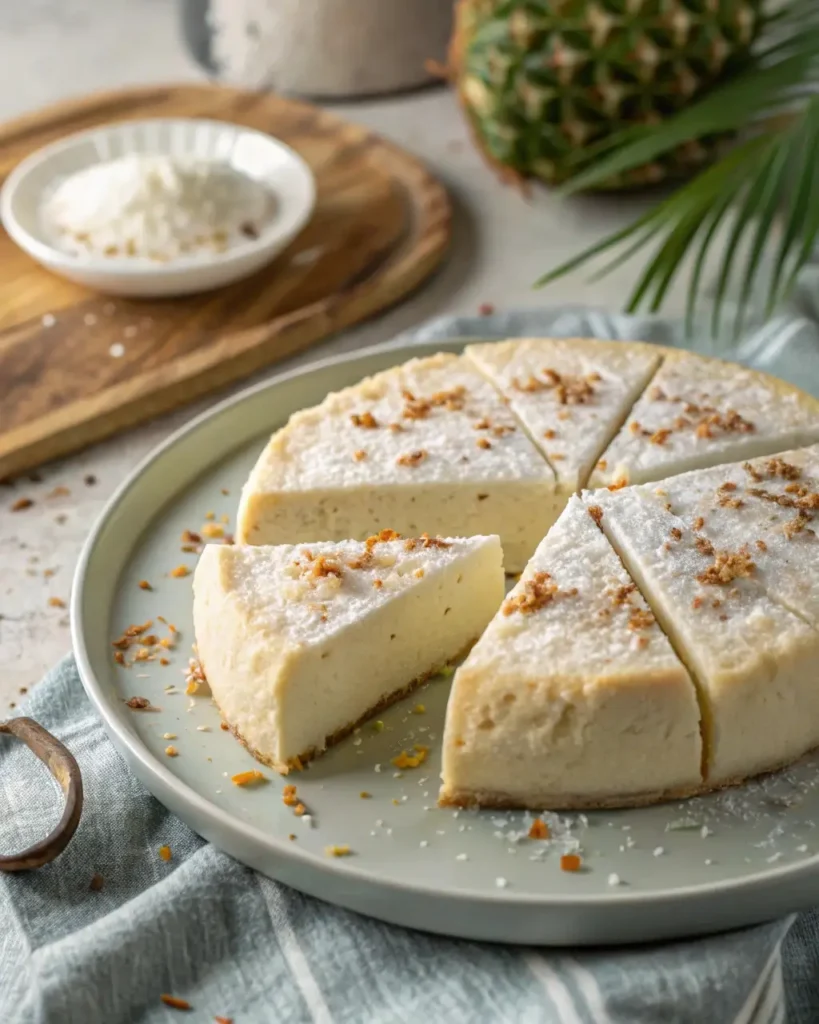
Best Ways to Serve and Present Quesillo
Topping Ideas and Serving Styles
Once your quesillo is perfectly chilled and unmolded, the fun really begins—presentation. While it’s absolutely delicious on its own, a little creativity can make it a show-stopping centerpiece for any dinner party or celebration.
Here are a few irresistible ways to serve it:
1. Fresh Fruit Garnishes
Top your quesillo with sliced strawberries, kiwi, or mango for a fresh contrast. The acidity from the fruit balances the custard’s sweetness beautifully.
2. Coconut Flakes or Toasted Nuts
Sprinkle on lightly toasted shredded coconut or slivered almonds. These toppings add texture and a hint of crunch.
3. Drizzle with Extra Caramel or Chocolate
Double down on decadence by pouring a thin stream of caramel or even a dark chocolate sauce just before serving.
4. Serve in Slices or Individual Portions
Instead of a whole mold, try baking in ramekins for single-serve quesillo. It’s elegant and easier for guests to enjoy.
5. Add Whipped Cream or Vegan Coconut Cream
A dollop on top adds a light, fluffy finish. It also makes for a more complete dessert feel.
Looking for presentation tips that wow without much fuss? Discover our Winter Wonderland Cake for decoration inspiration.
Pairing Quesillo with Drinks or Sides
Quesillo pairs surprisingly well with a variety of beverages and side flavors. Whether you’re serving it after dinner or at brunch, these pairings elevate the experience:
| Beverage/Sides | Why It Works |
|---|---|
| Black Coffee or Espresso | Cuts through sweetness; bold contrast |
| Sweet Dessert Wine | Complements caramel notes |
| Fresh Berries | Adds tartness and color |
| Biscotti or Ladyfingers | Soaks up caramel and adds texture |
| Sparkling Water with Lime | Refreshing and resets the palate |
Want a no-fuss dessert that also shines on the table? Try our Strawberry Poke Cake Recipe—it’s colorful, flavorful, and easy to serve.
Don’t forget: presentation starts with the unmolding process. Use a warm cloth around the mold to loosen the caramel, then invert slowly onto a plate for a dramatic reveal.
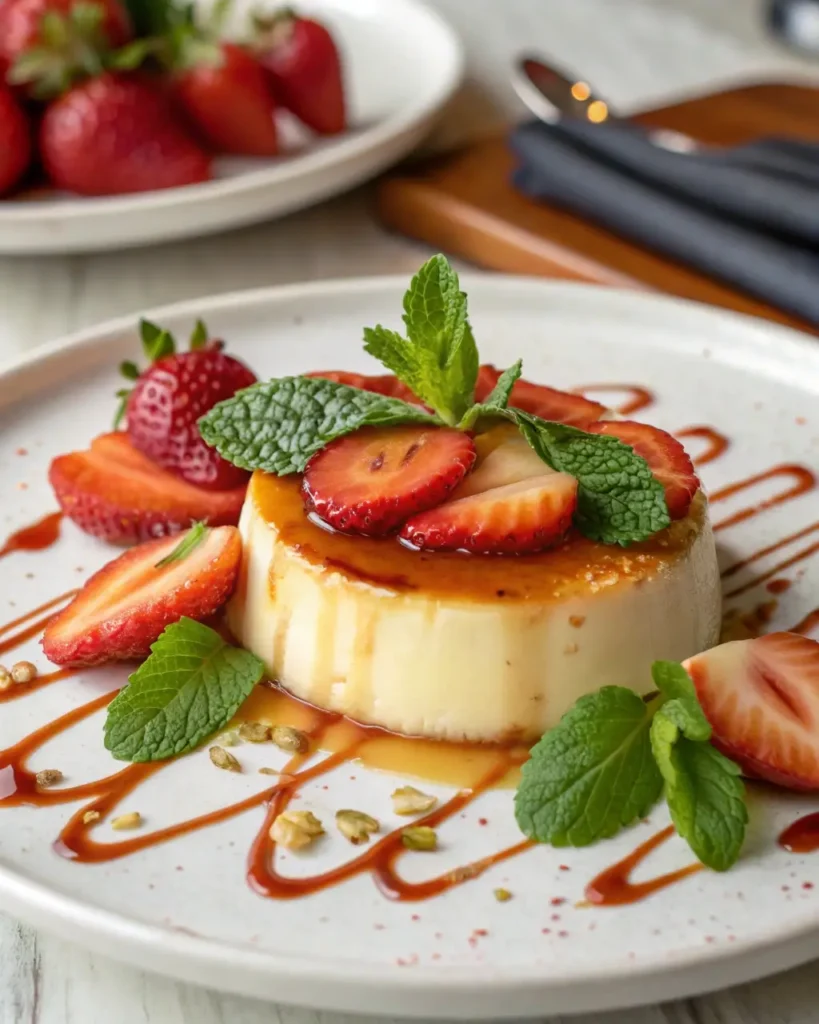
How to Store Quesillo Correctly
Refrigeration vs. Freezing Tips
Once your quesillo has been baked and cooled, storing it correctly is essential to maintaining its flavor and texture. Unlike cookies or cakes, quesillo is a custard-based dessert that requires careful handling.
Refrigeration: The Best Method
- Wrap tightly: After the quesillo is fully cooled, cover it with plastic wrap or foil. This prevents it from absorbing odors and keeps it moist.
- Store in the mold or transfer to an airtight container.
- Refrigeration time: Quesillo stays fresh in the fridge for up to 5 days.
Be sure not to leave it at room temperature for more than 2 hours. The dairy and egg components are prone to bacterial growth if left out too long.
Can You Freeze Quesillo?
Technically, yes—but we don’t recommend it. Freezing can cause the custard to separate and become watery when thawed. However, if you must:
- Wrap the quesillo in plastic and then foil to prevent freezer burn.
- Freeze for no more than 1 month.
- Thaw slowly in the fridge overnight.
Still, refrigeration is best for preserving its creamy texture.
Want to learn more about storing baked goods properly? You’ll love our guide on How to Make a Simple Salmon Patties Recipe, which includes meal prep tips perfect for busy kitchens.
How Long Does Quesillo Last?
To make sure you’re enjoying quesillo at its best, follow this quick guide:
| Storage Method | Duration | Notes |
|---|---|---|
| Refrigerator | 4–5 days | Best flavor and texture within 3 days |
| Freezer | Up to 1 month | Texture may change; wrap tightly |
| Room Temperature | Max 2 hours | Beyond this, it becomes unsafe to eat |
If you notice water pooling on the surface or any sour smell, it’s time to toss it.
Want to make the most out of your sweet leftovers? Discover creative dessert options like our 3 Ingredient Banana Bread—another great way to repurpose extra ingredients.
Frequently Asked Questions
What is quesillo made of?
Traditional quesillo is made using sweetened condensed milk, evaporated milk, eggs, vanilla extract, and caramelized sugar. These ingredients create a rich custard with a sweet, creamy taste. The caramel topping forms the glossy layer on top once the dessert is flipped out of the mold.
How is quesillo different from flan?
While both quesillo and flan are custard-based desserts, the key differences lie in their ingredients and texture. Quesillo typically includes whole eggs and condensed milk, which result in a denser, creamier consistency. Flan, on the other hand, is usually made with just milk and egg yolks, making it lighter and silkier.
What countries make quesillo?
Quesillo is popular in Venezuela and Nicaragua, though the term means different things in each. In Venezuela, it’s a classic caramel custard dessert. In Nicaragua and Mexico, however, “quesillo” refers to different forms of cheese or savory snacks. The dessert version is most associated with Venezuelan cuisine.
Is quesillo hard to make at home?
Not at all! With just a few ingredients and a little patience, anyone can make quesillo at home. The most important steps are using a water bath for baking, blending ingredients gently to avoid bubbles, and allowing the dessert to chill thoroughly before serving. Our step-by-step guide in Part 3 covers it all.
Can I make vegan quesillo?
Yes, you can! By substituting ingredients like coconut condensed milk, almond milk, and silken tofu in place of eggs and dairy, you can craft a vegan quesillo that still has a creamy, sweet, and custard-like texture. Just follow the vegan recipe outlined in Part 6 for delicious results.
How to store quesillo properly?
Always refrigerate quesillo after it has cooled. Store it in an airtight container or tightly wrapped in foil or plastic wrap. It stays fresh for 4–5 days in the fridge. Freezing is possible but may compromise the texture. For best flavor, consume within 3 days of making.
Conclusion
Whether you’re exploring Latin American desserts for the first time or reliving nostalgic flavors from your childhood, quesillo is a must-try. This creamy caramel custard dessert, known for its smooth texture and rich taste, stands out among global favorites like flan and cheesecake. From classic Venezuelan recipes to vegan-friendly alternatives, quesillo is incredibly versatile and surprisingly easy to master at home.
Store it right, top it beautifully, and serve it chilled — and you’ll have a show-stopping dessert that wins hearts every time.
Looking for more creative inspiration? Don’t miss our Almond Flour Crepes for a healthy and elegant twist on breakfast or dessert.
Quesillo: The Silky-Smooth Dessert You’ll Fall in Love With
Learn how to make Venezuelan quesillo, a silky caramel custard dessert. With just a few ingredients, this traditional treat is perfect for any occasion!
- Prep Time: 15 minutes
- Cook Time: 60 minutes
- Total Time: 1 hour 15 minutes
- Yield: 8 servings
- Category: Dessert
- Method: Baking
- Cuisine: Venezuelan
- Diet: Vegetarian
Ingredients
- 1 cup sugar (for caramel)
- 4 large eggs
- 1 can (14 oz) condensed milk
- 1 can (12 oz) evaporated milk
- 1 teaspoon vanilla extract
- Optional: Lime zest
Instructions
- Prepare the caramel: In a saucepan over medium heat, melt sugar until golden brown. Pour into the mold, swirling to coat the bottom.
- Blend the custard: Combine eggs, condensed milk, evaporated milk, vanilla extract, and optional lime zest in a blender until smooth.
- Assemble and bake: Pour the custard mixture over the caramel in the mold. Place the mold in a larger baking dish with hot water (water bath). Bake at 350°F (175°C) for 60 minutes or until set.
- Cool and serve: Allow quesillo to cool, then refrigerate for at least 4 hours. Invert onto a plate before serving to reveal the caramel glaze.
Notes
- Use a water bath to ensure even cooking and prevent cracks.
- Customize the flavors with cinnamon, coconut milk, or rum.
- Best served chilled for the perfect texture.

